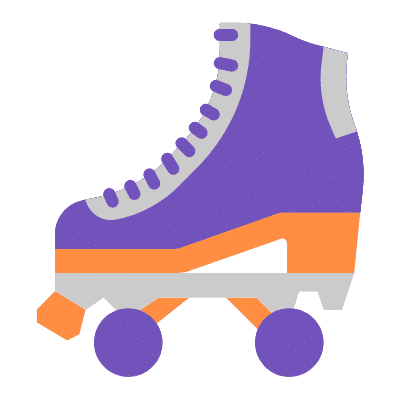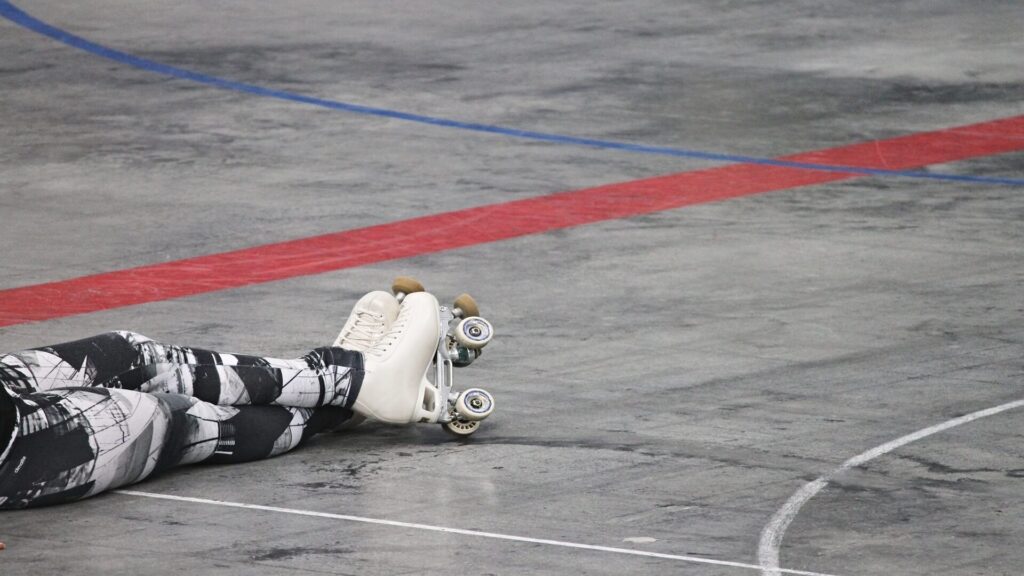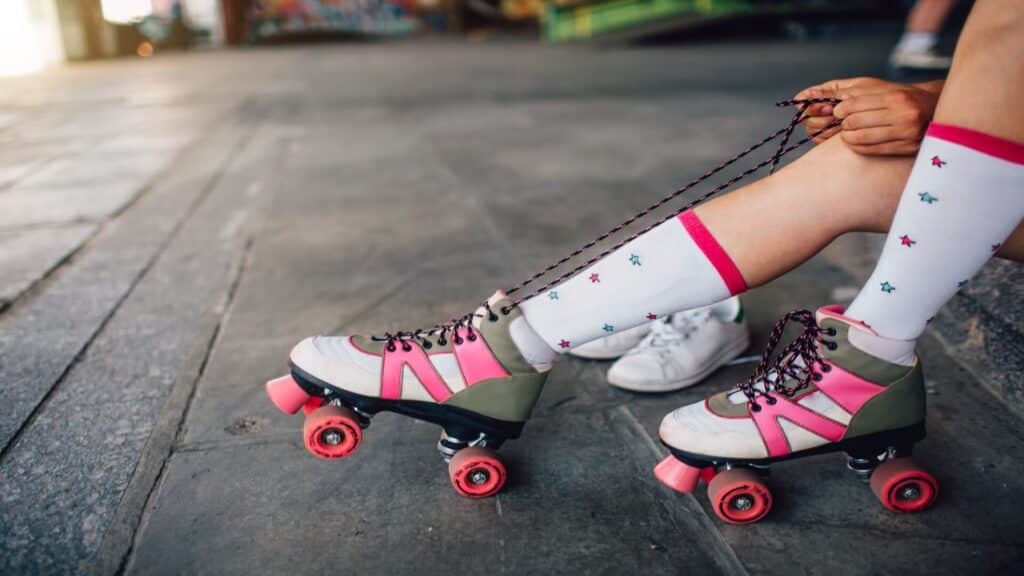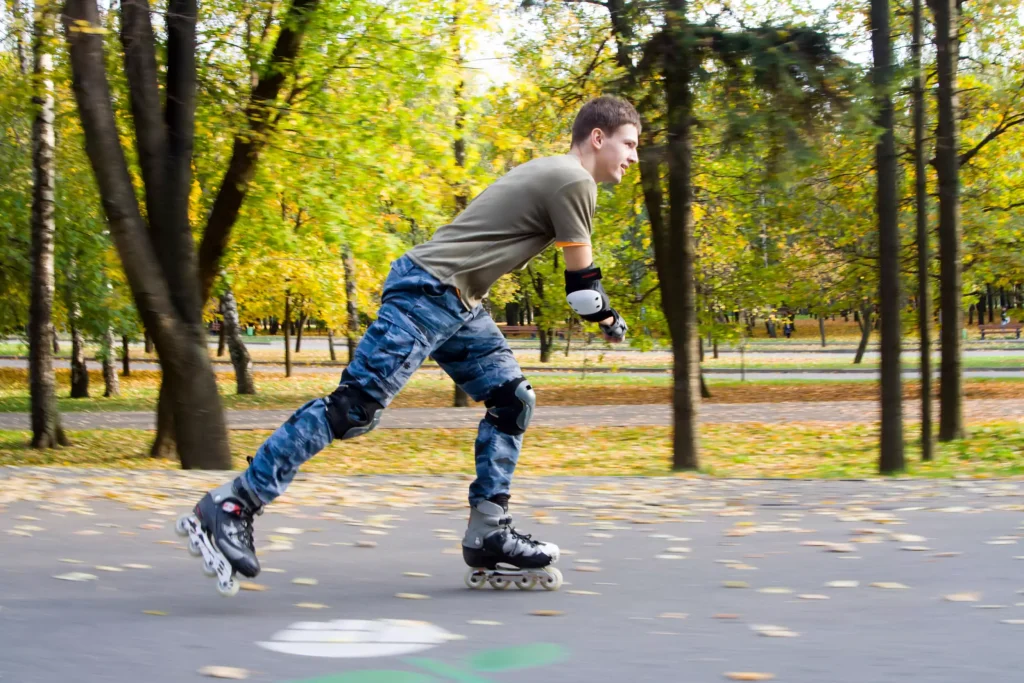Roller skating is an enjoyable and popular recreational activity that provides a low-impact, full-body workout.
While it offers numerous health benefits, such as improved cardiovascular fitness, muscle strength, and balance, it can also lead to injuries, particularly in the knee area. Knee pain after skating can result from various causes and may require appropriate treatment and care.
This article will explore the causes of knee pain after roller skating and discuss diagnosis, treatment, and prevention strategies.
Disclaimer: all the information is not a substitute for professional medical advice. Consult a doctor for personalized guidance.
Table of Contents
Causes of Knee Pain After Roller Skating
Acute Injuries
- Falls and Direct Impact – One of the most common causes of knee pain after skating is an acute injury resulting from a fall or direct impact. Falling while roller skating can cause bruising, fractures, or dislocations, which can lead to significant pain and discomfort in the knee area.
- Sprains and Strains – Overextending or twisting the knee during roller skating can lead to sprains or strains, which are common injuries in the sport. These injuries can cause immediate knee pain after skating, swelling, and reduced range of motion.
Overuse Injuries
- Patellofemoral Pain Syndrome – Patellofemoral pain syndrome, also known as “runner’s knee,” is a common overuse injury that can result from roller skating. The condition is characterized by pain around the kneecap and occurs when the patella does not move smoothly over the femur, causing friction and irritation.
- Iliotibial Band Syndrome – Another overuse injury, iliotibial (IT) band syndrome, is caused by excessive friction between the IT band and the outer part of the knee. This friction can result in inflammation and pain on the outside of the knee, particularly during and after roller skating sessions.
Pre-existing Conditions
- Osteoarthritis – Osteoarthritis is a degenerative joint condition that can cause knee discomfort, especially in older individuals. The wear and tear on the knee joint from roller skating can exacerbate existing osteoarthritis symptoms, leading to increased pain and stiffness.
- Patellar Tendonitis – Patellar tendonitis, also known as “jumper’s knee,” is an inflammation of the patellar tendon, which connects the kneecap to the shinbone. Roller skating can aggravate this condition by placing excessive strain on the tendon, leading to knee pain after skating.
Symptoms and Diagnosis
Common Symptoms of knee discomfort
Knee discomfort can present with various symptoms, including:
- Swelling
- Bruising
- Limited range of motion
These symptoms can indicate an injury or a pre-existing condition that has been exacerbated by roller skating.
Diagnostic Methods
To determine the cause of knee discomfort, a medical professional may perform a physical examination and ask about the patient’s medical history. Imaging tests such as X-rays or MRIs may also be ordered to assess the extent of the injury and provide a clear diagnosis.
Treatment and Management
Immediate First Aid (RICE)
Following an acute injury, the RICE method is often recommended for initial treatment:
- Rest: Avoid putting weight on the injured knee and limit activity to promote healing.
- Ice: Apply ice packs to the affected area for 15-20 minutes every 1-2 hours to reduce swelling and pain.
- Compression: Use a compression bandage to help control swelling and provide support.
- Elevation: Keep the injured knee elevated above heart level to minimize swelling.
Medications
Over-the-counter pain relievers and anti-inflammatory drugs can help manage knee discomfort. However, it is essential to consult a healthcare professional before taking any medication.
Physical Therapy
Physical therapy can be beneficial for treating knee discomfort, particularly in cases of overuse injuries or pre-existing conditions. A licensed physical therapist can design a personalized treatment plan that includes the following:
- Stretching exercises improve flexibility and relieve muscle and tendon tension surrounding the knee.
- Strengthening exercises help stabilize the knee joint and improve overall muscle balance and support.
Assistive Devices
The use of assistive devices can also help manage knee discomfort:
- Knee braces: Braces can provide support and stability, reducing stress on the knee joint and alleviating pain.
- Supportive footwear: Wearing shoes with proper cushioning and arch support can help absorb shock and reduce stress on the knees during roller skating.
Prevention
To minimize the risk of knee pain after roller skating, consider incorporating the following preventive measures:
Warm-up and Cool-down Routines
Before and after roller skating, spend time warming up and cooling down to prepare your muscles and joints for activity and reduce the risk of injury.
Proper Skating Techniques
Proper skating techniques can help prevent knee discomfort by minimizing joint strain. Focus on maintaining good posture, evenly distributing your weight, and avoiding excessive twisting or bending of the knees.
Protective Gear
Wearing appropriate protective gear can significantly reduce the risk of injury while roller skating:
- Knee pads: These can help cushion the impact of falls and protect the knee joint from injury.
- Wrist guards: Wrist guards can help prevent injuries to the hands and wrists, which can indirectly protect the knees by reducing the likelihood of falls.
- Helmets: Wearing a helmet can help protect your head in the event of a fall, reducing the risk of head injuries and their potential effects on balance and coordination.
Regular Muscle Conditioning
Engaging in regular muscle conditioning exercises can help improve the strength and stability of your knee joint, reducing the risk of injury.
Knowing Your Limits and Avoiding Overexertion
Listen to your body and avoid pushing yourself beyond your physical limits. Overexertion can increase the risk of both acute and overuse injuries, leading to knee discomfort after roller skating.
You can read here about another article we created that examines the question: is roller skating bad for your knees?
Conclusion
Addressing knee pain after skating is crucial for maintaining a safe and enjoyable roller skating experience. By understanding the potential causes of knee discomfort and taking preventive measures, you can reduce your risk of injury and continue to enjoy the many benefits of roller skating.
If you experience persistent or severe knee pain after roller skating, consult a medical professional for proper diagnosis and treatment.
FAQs
Question: What are the common causes of knee pain after roller skating?
Answer: Knee pain after roller skating can result from acute injuries (such as falls or direct impact, sprains, and strains), overuse injuries (such as patellofemoral pain syndrome and iliotibial band syndrome), or pre-existing conditions (such as osteoarthritis and patellar tendonitis).
Question: What are the symptoms of knee pain after roller skating?
Answer: Common symptoms of knee pain after roller skating include swelling, bruising, and limited range of motion. These symptoms can indicate an injury or a pre-existing condition that has been exacerbated by roller skating.
Question: How can I diagnose the cause of my knee pain after roller skating?
Answer: Consult a medical professional who will perform a physical examination and may order imaging tests such as X-rays or MRIs to assess the extent of the injury and provide a clear diagnosis.
Question: What immediate first-aid steps should I take if I experience knee pain after roller skating?
Answer: Apply the RICE method: Rest the injured knee, apply Ice to reduce swelling and pain, use Compression with a bandage to control swelling, and Elevate the knee above heart level to minimize swelling.
Question: How can I treat knee pain after roller skating?
Answer: Treatment options for knee pain after roller skating may include rest, ice, compression, elevation, over-the-counter pain relievers and anti-inflammatory medications, physical therapy, and the use of assistive devices such as knee braces or supportive footwear. Consult a healthcare professional for personalized advice.
Question: How can I prevent knee pain while roller skating?
Answer: To prevent knee pain while roller skating, engage in warm-up and cool-down routines, practice proper skating techniques, wear protective gear (knee pads, wrist guards, and helmets), participate in regular muscle conditioning exercises, and know your limits to avoid overexertion.
Question: When should I consult a medical professional for knee pain after roller skating?
Answer: If you experience persistent or severe knee pain after roller skating, or if your symptoms do not improve with rest and self-care, consult a medical professional for proper diagnosis and treatment.









